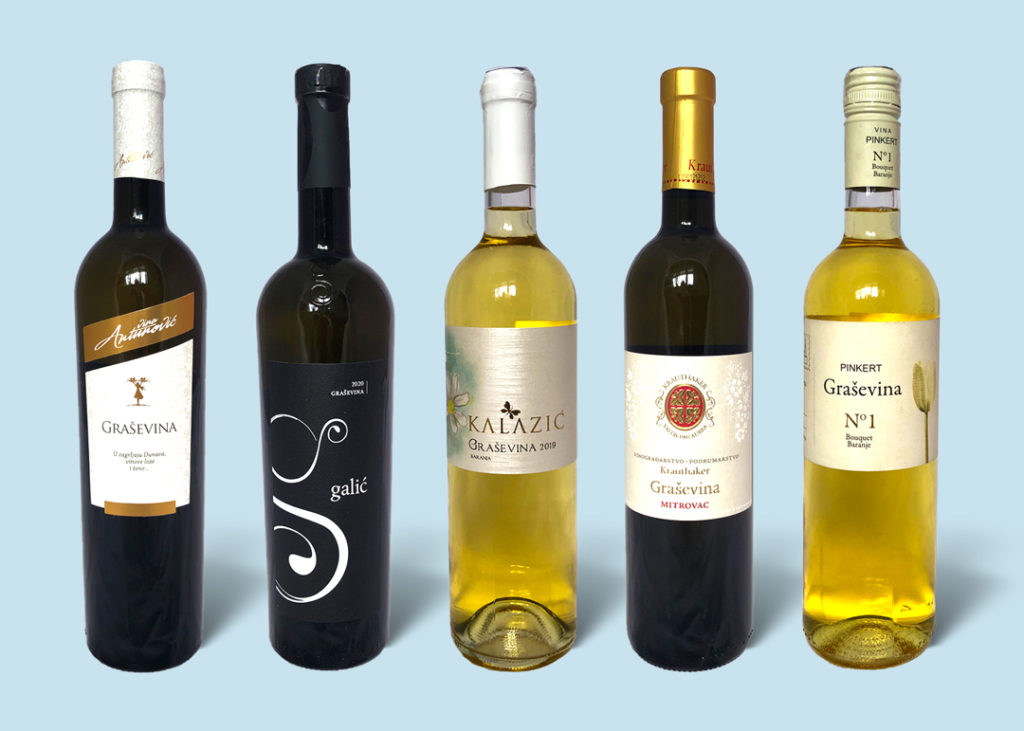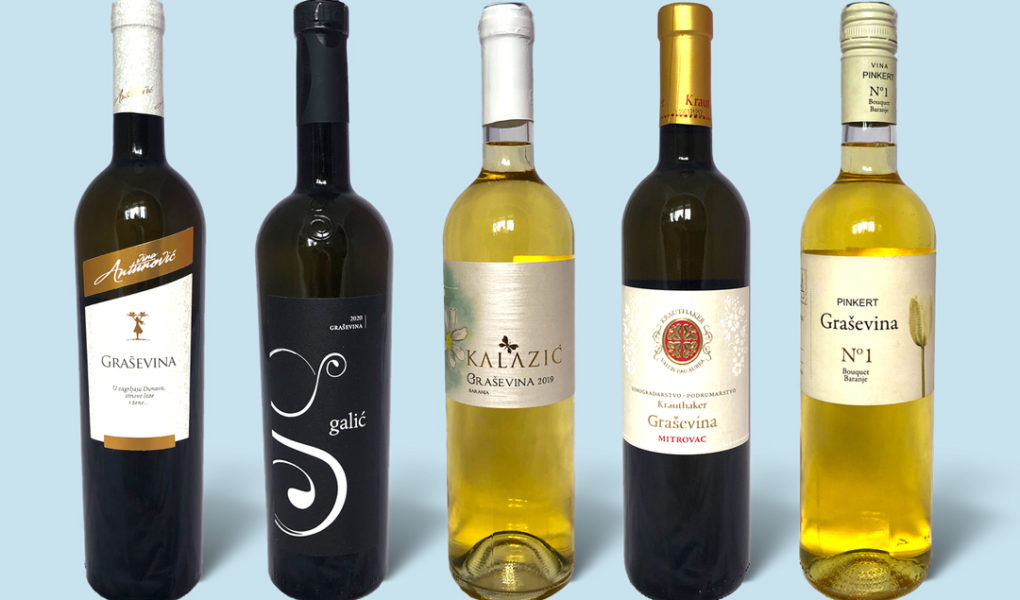Graševina is Croatia’s most-planted grape, but somehow it always gets less attention than those sunny seaside darlings Malvazija and Pošip. We tasted five dry Graševinas, in part to prove that this variety can hold its own on a sailboat or waterfront terrace. But Graševina is a grape of many talents—it’s up to you to choose the style you prefer.
In most places it is grown, Graševina has a reputation for being boring. This may have more to do with the bad grape-growing habits of the past—when it was grown for quantity more than quality—than with the grape itself. But Croatia’s inland wine regions have proven Graševina’s merit. Grown in the Uplands (around Zagreb) and Slavonia and the Danube (the Croatian far east), where the grape likely originated, Graševina excels. It can make wines in styles from dry to sweet, from minimalist-mineral to juicy-fruity, and even sparkling.
All the wines we tasted happen to come from Slavonia and the Danube. The crisp, minerally Graševinas are perfect for summer sipping, and pair nicely with both coastal seafood and the river fish of inland Croatia. The luscious, fruity versions can have more weight to them, and are made for pork loin and roasted poultry. Use either style to make gemišt, the Croatian spritzer made with white wine and sparkling mineral water—for day-drinking, it’s an ingenious compromise.
The Tasting
Note: This tasting is meant to be readable, not comprehensive. We tasted six wines (one was corked) not 60. The wines are listed in alphabetical order by producer. A star (*) indicates wines that stood out for their quality and flavor on the day of the tasting. Prices are those at the winery or winery webshop.

*Antunović Graševina 2019 (Erdut) 60 kuna
An example of the less fruity, more minerally style of Graševina, this smells like a pool of fresh rainwater with a drop of Capri perfume in it, for just the lightest hint of lemon and citrus blossoms. The wine has some body to it—it’s not ultralight—but it avoids the ripe fruit of some other Graševinas. Think of it as a meditation on wet river stones.
Galić Graševina 2020 (Kutjevo) 65 kuna
The only 2020 vintage wine in the tasting, this has the zesty acidity of a freshly bottled wine. It’s another entry in the minerally category, with that after-rain fresh aroma (it’s called petrichor, if you want to get wordy) and flashes of honeydew melon, then lemon and minerals on the finish. A very modern style of Graševina, this got a “wow” from our guest tasters.
*Kalazić Graševina 2019 (Baranja) 48 kuna
Graševina from Baranja tends to be a little fuller and fruitier than others, and this one delivers. It’s more golden in color than the minerally entries, but still has a rainwater freshness to the aroma, as well as pretty floral, yellow apple and light golden melon notes. On the palate its fruit has a touch of earthiness, as if that melon is just slightly overripe—a subtle twist that turns a simple wine into a star. Organic.
Krauthaker Graševina Mitrovac 2019 (Kutjevo) 72 kuna
Krauthaker is the classic, and the Mitrovac vineyard produces consistently great fruit. This wine falls between the two camps—it’s fruity, but not overtly so, with light pear blossom and white peach aromas, then golden apple flavors and a touch of honey when the wine warms up a bit. The mineral notes from Kutjevo’s volcanic soil are there under the fruit, giving this sophisticated Graševina the best of both styles.
Pinkert Graševina No. 1 2015 (Baranja) 59 kuna
This was our guest tasters’ favorite for its heady floral aroma and lush fruit flavors—it’s by far the fruitiest of the five here. You’ll find elderflower, a touch of jasmine, melon, golden apple and the slightest vegetal note (perhaps due to the older vintage). It’s rustic and friendly, with a good balance of acidity against the rich fruit.
Cheers Croatia Magazine conducts wine tastings in the semi-blind format. This means that we know what wines we have, but they are placed in numbered bags so we can’t identify them during the tasting. Wines for tastings are purchased, or occasionally donated by the winery. See the magazine’s Affiliations and Gifts Policyfor more information.

